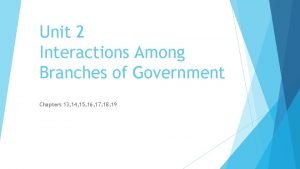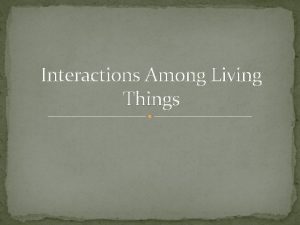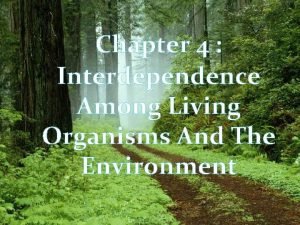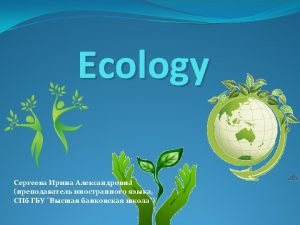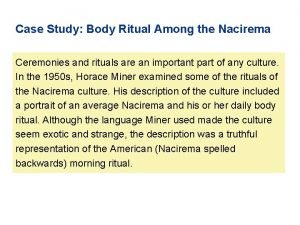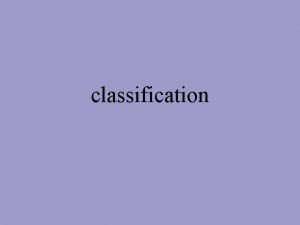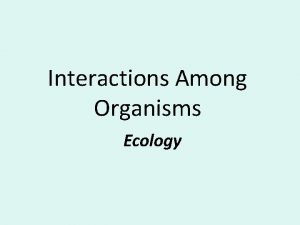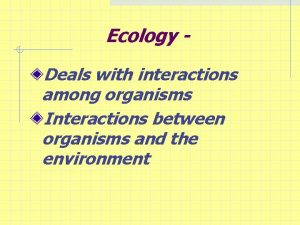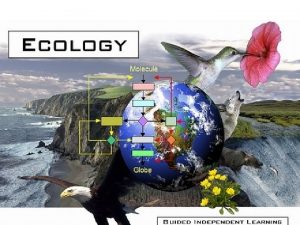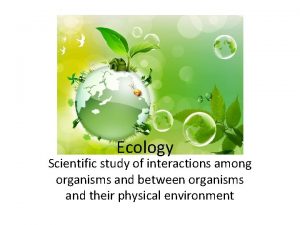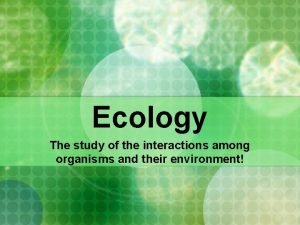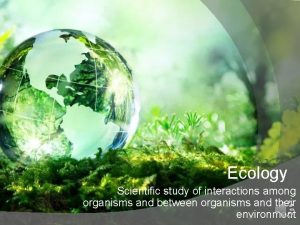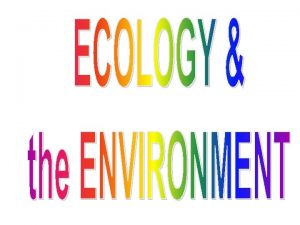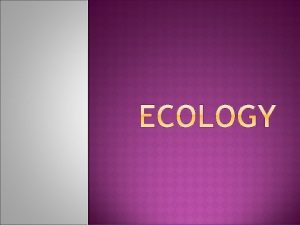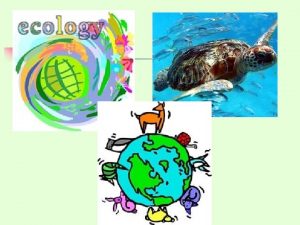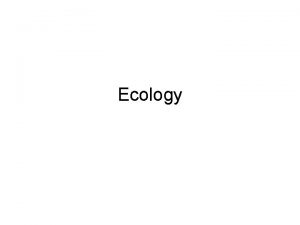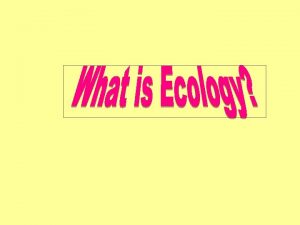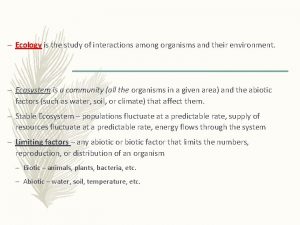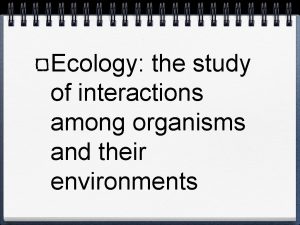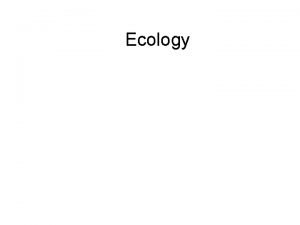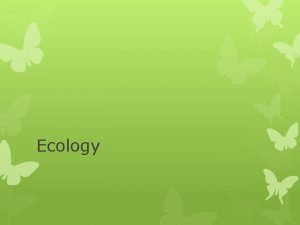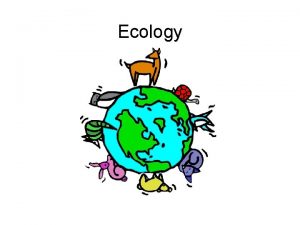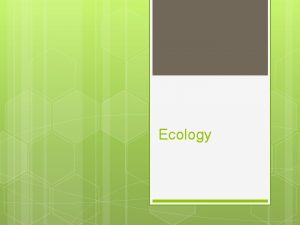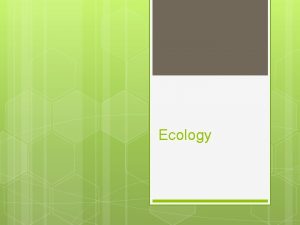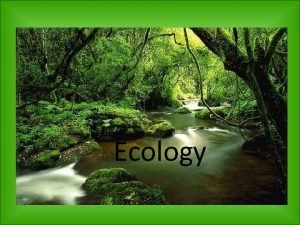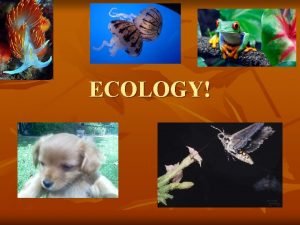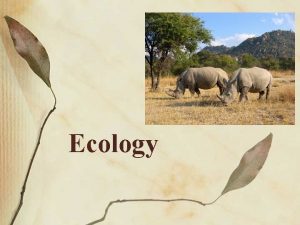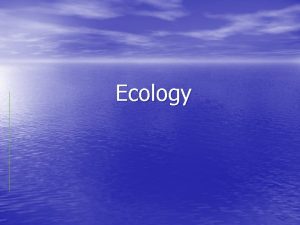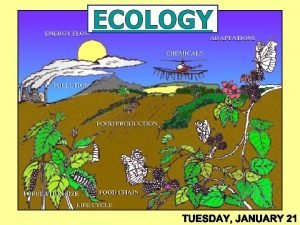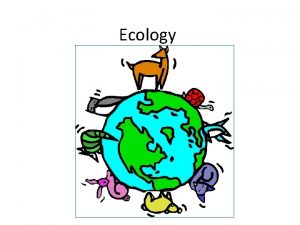Ecology is the study of interactions among organisms

























- Slides: 25

Ecology is the study of interactions among organisms and between organisms and their environment.

Ecology: Levels of Organization Individual Population Community Ecosystem Biome Biosphere

Ecological Niche defines an animal’s lifestyle… habitat nutrition foraging territory Niche includes everything an animal does or uses in order to survive.

Ecology: Energy Flow Every organism needs energy. Sunlight is the main energy source for life. Less than 1% of sunlight is used by organisms. Where does the rest of the sunlight go? Photograph courtesy philip. greenspun. com

Ecology: Energy Flow photosynthesis: use of light energy to produce carbohydrates autotrophs make their own food. autotrophs are producers

Ecology: Energy Flow autotroph: produces its own food heterotroph: acquires energy from other organisms What is a producer? (auto- or hetero-) What is a consumer? (auto- or hetero-) Are heterotrophs producers or consumers? consumers: Primary secondary tertiary quaternary

Ecology: Energy Flow heterotrophs are consumers herbivores eat plants carnivores eat meat omnivores eat plants and meat insectivores eat insects detritivores feed on remains decomposers break down organic matter Where are decomposers in a food chain?

Ecology: Feeding Relationships Energy flows through an ecosystem in one direction (arrows) from the sun or inorganic compounds to producers to consumers. Food chain: diagram that shows simple feeding relationships. Trophic level: each step in a food chain All food chains start with a producer.

Students be careful! Remember: the arrow shows the direction energy flows in an ecosystem. In this example, the Leopard seal eats the penguin and as a result, gets the energy.

The caterpillar eats the flower and gets energy from the _____ The owl gets energy from the snake and gets energy from the ____

Ecology: Feeding Relationships A food web is a network of complex feeding relationships that connects multiple food chains. If one species is lost from a food web, all other species are affected. The mouse gets its energy from _____ and ______ The mouse gives its energy to the ____

Terrestrial Food Web

Aquatic Food Web

Ecological Pyramids: Energy Pyramid (energy flow in a community) each trophic level represents a different group of organisms in a food chain about 10% of the energy available at each trophic level is transferred to organisms at the next trophic level energy is lost as heat and in life processes

Ecological Pyramids: Biomass Pyramid biomass is the total amount of living tissue expressed as grams of organic matter per unit area biomass pyramid represents the potential amount of food available at each trophic level normally the greatest biomass is at the base

Ecological Pyramids: Numbers Pyramid based on the numbers of individuals at each trophic level some number pyramids look like biomass & energy pyramids, some do not in this example, the oak tree has a large amount of energy and biomass, but it is only one organism

Laws of Ecology All things are interconnected. Everything goes somewhere. There’s no such thing as a free lunch. Nature bats last. Ecology: A Pocket Guide by Ernest Callenbach

Ecology: Community Interaction Symbiosis: any relationship in which two species live closely together.

Ecology: Community Interactions Competition: when organisms try to use a resource in short supply at the same time and same place.

Ecology: Community Interaction Predation: when one organism captures and eats another organism.

Ecology: Symbiosis Mutualism: when both species benefit In this example, the sea anemone is cleaned by the clown fish, who in turn is protected by The anemone’s stinging tentacles.

Ecology: Symbiosis Commensalism: When one species benefits from the and the host species is unaffected. The leafy plant is an epiphyte, growing on another plant only for support.

Ecology: Symbiosis Parasitism: one organism benefits and the other organism (host) is harmed. Asian tiger mosquito Does the host die as a result?

Label the following as parasitism (P), mutulasism (M), or commensulasm (C) _____ Barnacles create home sites by attaching themselves to whales. This neither harms nor benefits the whales. _____ Mistletoe extracts water and nutrients from the spruce tree, which the tree needs _____ Yucca flowers are pollinated by yucca moths. The moths lay their eggs in the flowers where the larvae hatch and eat some of the developing seeds. Both species benefit. _____ Hermit crabs live in shells made and then abandoned by snails. This neither harms nor benefits the snails. _____ Oxpeckers feed on the ticks found on a rhinoceros. Both species benefit. _____ As buffalos walk through grass, insects become active and are seen and eaten by cowbirds. This neither harms nor benefits the buffalos. _____A flea feeds on a mouse’s blood to the mouse’s detriment. _____ Wrasse fish feed on the parasites found on the black seabass’s body. Both species benefit. _____ deer/tick Ticks feed on deer blood to the deer’s detriment. _____ Silverfish live and hunt with army ants They share the prey. They neither help nor harm the ants. _____ A cuckoo may lay its eggs in a warbler’s nest. The cuckoo’s young will displace the warbler’s young and will be raised by the warbler.

Ecology food web and symbiotic relationships. pptx
 Examples of abiotic factors
Examples of abiotic factors Congress formal and informal powers
Congress formal and informal powers Interactions among living things
Interactions among living things Organisms ecology
Organisms ecology Principles of ecology chapter 2 section 3 answer key
Principles of ecology chapter 2 section 3 answer key Principles of ecology organisms and their relationships
Principles of ecology organisms and their relationships Serkup kaca
Serkup kaca Member of the same species
Member of the same species Unicellular multicellular organisms
Unicellular multicellular organisms Ecology study guide
Ecology study guide Study guide chapter 3 section 1 community ecology
Study guide chapter 3 section 1 community ecology Ecology is the study that helps to preserve
Ecology is the study that helps to preserve What are the most important values of the nacirema
What are the most important values of the nacirema Human order taxonomy
Human order taxonomy Organisms taxonomy
Organisms taxonomy Hát kết hợp bộ gõ cơ thể
Hát kết hợp bộ gõ cơ thể Bổ thể
Bổ thể Tỉ lệ cơ thể trẻ em
Tỉ lệ cơ thể trẻ em Gấu đi như thế nào
Gấu đi như thế nào Chụp phim tư thế worms-breton
Chụp phim tư thế worms-breton Chúa yêu trần thế alleluia
Chúa yêu trần thế alleluia Các môn thể thao bắt đầu bằng từ đua
Các môn thể thao bắt đầu bằng từ đua Thế nào là hệ số cao nhất
Thế nào là hệ số cao nhất Các châu lục và đại dương trên thế giới
Các châu lục và đại dương trên thế giới Công của trọng lực
Công của trọng lực

